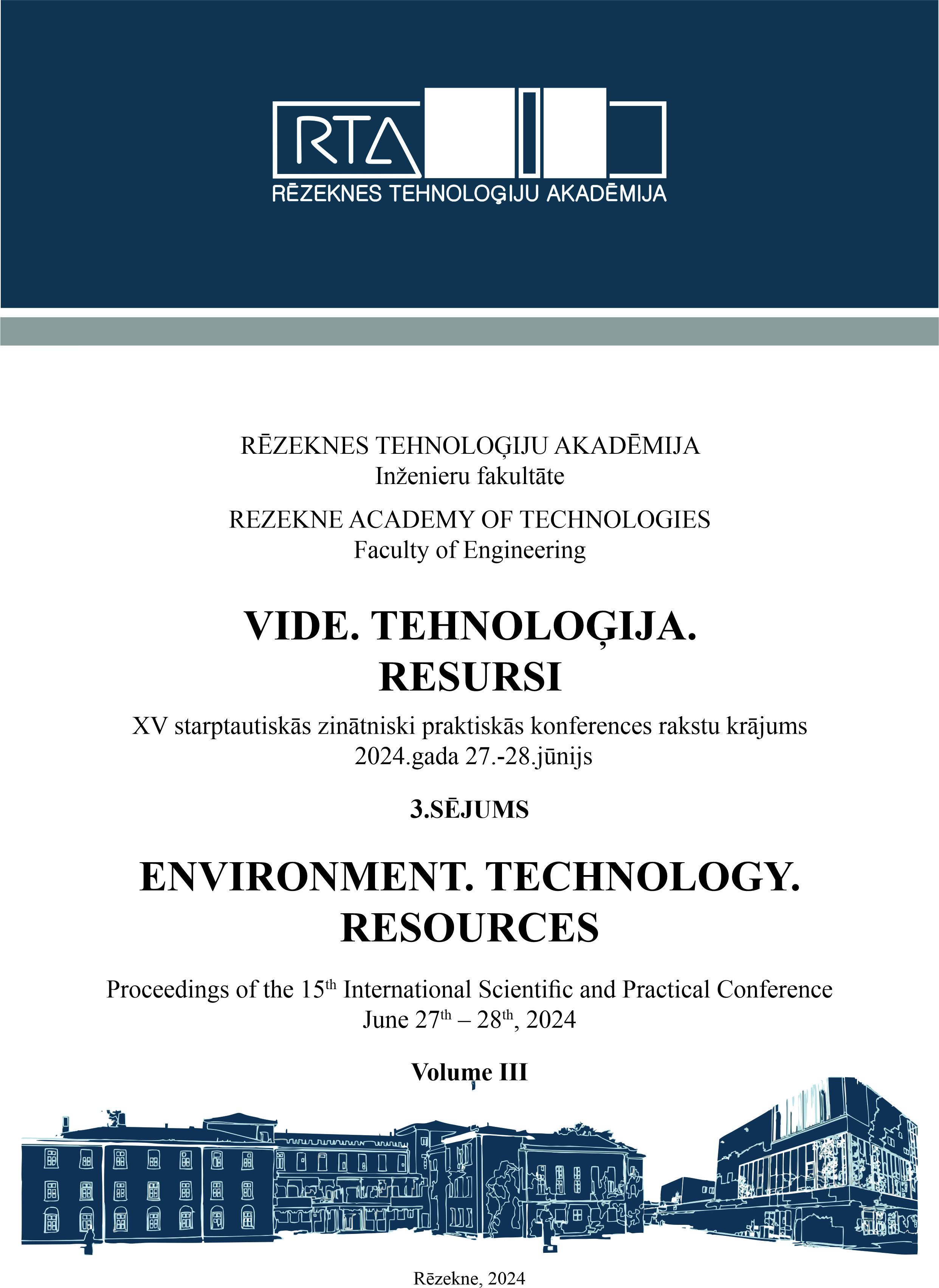INFLUENCE OF TECHNOLOGICAL PARAMETERS ON LASER MARKING PROCESS OF COPPER SURFACES
DOI:
https://doi.org/10.17770/etr2024vol3.8179Keywords:
Copper, Laser marking, Contrast, Roughness, Speed, Raster stepAbstract
Laser marking technology today is a key part of the production of many products and devices used in our daily lives. At the same time, for specific types of products, the process must be optimized depending on the material used, laser system and marking method. Copper is such a metal that has a number of applications in the military industry, electrical engineering, electronics, household, etc. The scientific report investigates the influence of the technological parameters speed, raster step and number of repetitions on the contrast and roughness of marking for copper samples. A fiber laser technology system was used to perform the experiments, and the roughness measurements were performed with an OLS 5000 laser microscope. A wide range of marking speeds from 10 mm/s to 1500 mm/s was selected, where the contrast and roughness behavior of the marking is tracked for different raster steps in both single marking and double marking. It was found that as the speed increased, the contrast and roughness decreased. Also, with double marking, the contrast and roughness values are higher than with single marking. The velocity intervals in which the contrast has positive values and those in which it has negative values are established. The regularity was obtained that increasing the step of the raster leads to a decrease in contrast and an increase in roughness.Downloads
References
A Q Zaifuddin1 , M H Aiman1, M M Quazi1 , Mahadzir Ishak1 ,T Ariga “Effect of Laser Surface Modification (LSM) on laser energy absorption for laser brazing” Materials Science and Engineering 788 (2020) 012013, doi:10.1088/1757-899X/788/1/012013
Narica P., Lazov L., Teilans A., Grabusts P., Teirumnieks E., Cacivkins P., Method for color laser marking process optimization with the use of genetic algorithms, (2017) Vide. Tehnologija. Resursi - Environment, Technology, Resources, 2, pp. 101 - 106, DOI: 10.17770/etr2017vol2.2607
Lazov L., Teirumnieks E., Karadzhov T., Angelov N., Influence of power density and frequency of the process of laser marking of steel products, Infrared Physics and Technology, 116, art. no. 103783, (2021), DOI: 10.1016/j.infrared.2021.103783
Teirumnieks E., et. al., Methodology for automatic determination of contrast of laser marking for different materials, Vide. Tehnologija. Resursi - Environment, Technology, Resources, 3, pp. 134 - 136, (2019), DOI: 10.17770/etr2019vol3.4143
Deneva H., Narica P.,et.al., Factors influencing the color laser marking, (2015) Vide. Tehnologija. Resursi - Environment, Technology, Resources, 1, pp. 102 - 107, DOI: 10.17770/etr2015vol1.223
Angelov, N., et. al., Influence of pulse duration on the process of laser marking of CT80 carbon tool steel products, Journal, Laser Physics, 31(4):045601, DOI:10.1088/1555-6611/abe5af
Todorov D.N., Shterev I.J., Nikolaeva P.M., Angelova B.D., Study of laser cutting and marking on the filt with the help of a CO2-laser, Vide. Tehnologija. Resursi - Environment, Technology, Resources, 3, pp. 143 - 147, (2019), DOI: 10.17770/etr2019vol3.4202
Balchev I., Atanasov A.,et.al., Investigation of the influence of the scanning speed and step in laser marking and engraving of aluminum, (2021) Journal of Physics: Conference Series, 1859 (1), art. no. 012002, DOI: 10.1088/1742-6596/1859/1/012002
Lazov L., Teirumnieka E., Angelov N., Yankov E., Modification of the roughness of 304 stainless steel by laser surface texturing (LST), (2023) Laser Physics, 33 (4), art. no. 046001, DOI: 10.1088/1555-6611/acbb76
Lazov L.K., Petrov N.A., Investigation of the impact of the number of repetitions and the defocus on the contrast of laser marking for products made of tool steel, Metallofizika i Noveishie Tekhnologii, 34 (7), pp. 1003 - 1011,(2012)
M.R. Akbarpour, F. Gazani, H. M. Mirabad, I. Khezri “Recent advances in processing, and mechanical, thermal and electrical properties of Cu-SiC metal matrix composites prepared by powder metallurgy”, Progress in Materials ScienceVolume 140, December 2023. 101191. https://doi.org/10.1016/j.pmatsci.2023.101191
Risham Singh Ghalot, et al., Investigation of the Change in Roughness and Microhardness during Laser Surface Texturing of Copper Samples by Changing the Process Parameters, 2023, Coatings, 13(11):1970, DOI:10.3390/coatings13111970
L. Lazov and N. Angelov, “OPTIMISATION OF THE PROCESS OF LASER MARKING OF PRODUCTS MADE OF TOOL STEEL,” Contemporary Materials, vol. III, no. 1, pp. 189-193, 2012.
Gachot C, Rosenkranz A, Hsu S, Costa H. A critical assessment of surface texturing for friction and wear improvement. Wear 2017; 372:21–41. https://doi.org/10.1016/j.wear.2016.11.020.
Smith, John K. "Why Copper Is Reddish in Colour: Comparing Copper, Silver, and Gold." Journal of Materials Science, vol. 15, no. 3, 2020, pp. 102-115. DOI: 10.1234/jms.2020.01234
Downloads
Published
Issue
Section
License
Copyright (c) 2024 Vitālijs Jurčs, Emil Yankov, Nikolay Angelov, Antons Pacejs, Imants Adijāns

This work is licensed under a Creative Commons Attribution 4.0 International License.



